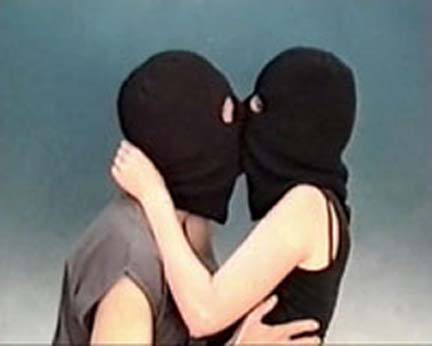
Few things make me happier than a lyrical, perpetually unresolved video exhibition. Not Figments of a Madman’s Imagination: The Uncanny in Contemporary Romanian Video Art, currently on view at Kontainer Gallery in Los Angeles, is particularly exciting. The work has none of the show title’s fantastc verbosity and it relies on quiet, unpretentious kinesthesia.
“Objects arrive technologically produced and perfect as declaring themselves as themselves all the time,” poet Ariana Reines told Bookworm’s Michael Silverblatt during a radio interview, “it seemed to me that . . . if something is written, or sung, or anything, it should articulate itself within its own identity, like the identity of its medium.” I found her observation beautifully precise. In the commercial world we live in, objects do “arrive” in perfect condition, confident in their packaging, ready to be consumed. And this is where the video work at Kontainer comes in. It occupies that threshold between immateriality and materiality while still asserting its physical identity.
The videos in The Uncanny are strikingly comfortable with themselves. The medium of moving images seems to re-embody the movements occuring in each. Even the way the monitors interact with each other in the gallery suggests that the videos are not only about physical and sensorial experiences, they are physical and sensorial.
Ciprian Muresan’s Stanca lasts just long enough for us to see an unflinching child drag her finger across her throat. The video loops indefinitely, making the ominous gesture seem almost serene in its repetition. Dan Acostioaei’s Essential Current Affairs depicts two figures in ski masks. The making-out the figures do in front of the film’s saturated blue background is so rythmically transfixing that the absurdity of the situation dissipates. In Praful/Dust, by Mona Vatamanu and Florin Tudor, a man fills his pockets with dirt. Again, the situation is absurd, but the man’s body and movement fits the space of the screen so idyllically that the video seems organic despite its idiosyncracies.
Lara Taubman, who curated The Uncanny when it first appeared at Florence Lynch Gallery in New York, says that Romanian artists live with constant physical disjointedness, a remnant of Ceacuscu’s regime. The work of these particular Romanian artists negotiates cutural and architectural oddities, moving through and around these oddities but never overlooking them.